I’m running out of pottery making supplies at home, so am wrapping up my experiments for now. After making the Pensacola Incised pot, I had a ball of clay about the size of my fist left over, without added shell. With it, I decided to whip up a Lamar Stamped clay ball.
Lamar Complicated Stamped pottery, ca. 17th C. AD
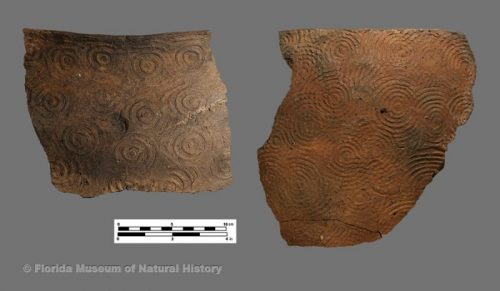
This type of pottery was made by indigenous people during the Spanish Mission period in Florida. The large jars were stamped with check or large complicated stamped designs, and often had rims decorated with notches, pinching, and nodes.
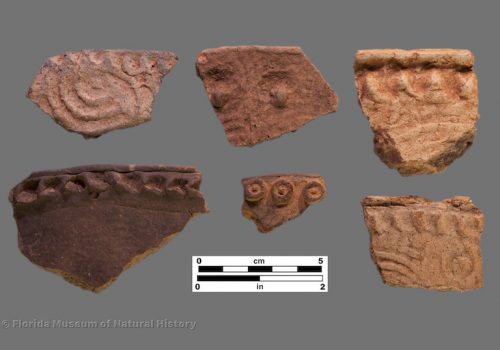
Among all the typical pottery forms, archaeologists investigating these sites have also found fired clay balls with complicated stamping. We’re not entirely sure what they were used for, possibly for cooking. Currently Amanda Hall, one of the graduate students working in our lab, is researching these balls for her dissertation. She’s tracked down well over 100 examples from Florida and Georgia.
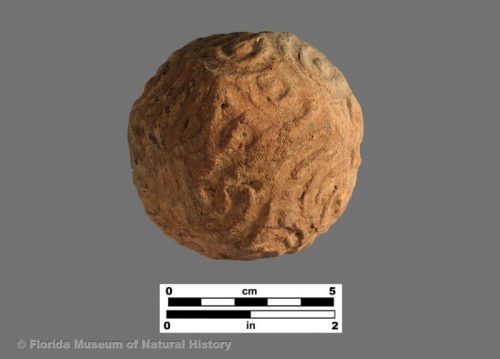
Lamar pottery was made with grog temper, aka, recycling! Old pots were crushed into small pieces and added to the clay to make it stronger. Even though they are both made of clay, you can see the individual grog particles in a fired sherd because they are usually a different color and maintain a blocky shape, like the black and gray pieces in this fragment of a clay ball:
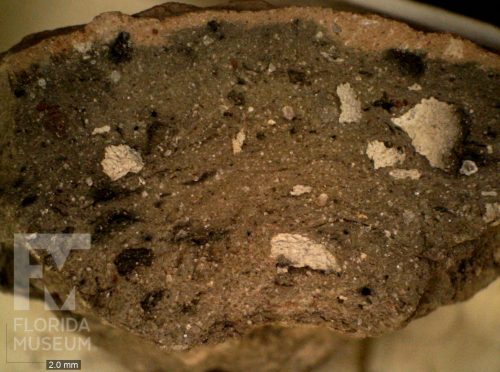
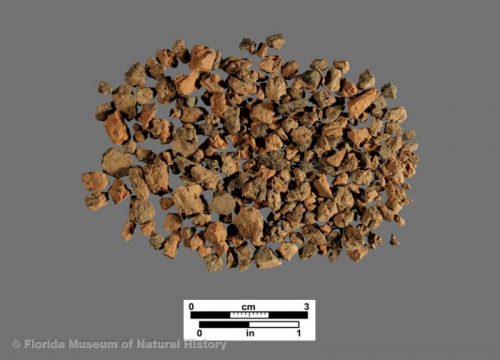
I didn’t have any grog to work with at home, so this ball, like most of my other pieces, is not quite authentic. Nevertheless, I was curious to see if I could make a ball that would fire well. Big lumps of clay are actually tricky from a technical standpoint. They take a while to dry, and you’ve got to get all the moisture out, otherwise as they heat up in the fire the water will convert to steam and cause them to explode. For a similar reason, you want to avoid any trapped air pockets, because the air will also expand with increasing temperature. Most of the Lamar clay balls that have been found have been broken. While that’s true for most things in archaeology, their fracture was likely due to heat stress during manufacture or use.
I started with my ball of clay and a mini bulls-eye wooden stamp. Like other stamped pottery, Lamar pottery was made with carved wooden paddles. Less than a minute later, I had completely covered the exterior with stamping, and it was done! These balls seem to have been made very quickly, as they usually aren’t quite spherical, and have visible facets from being whacked with the paddle.
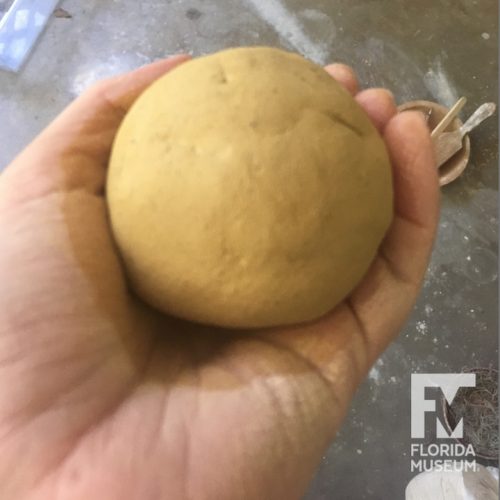
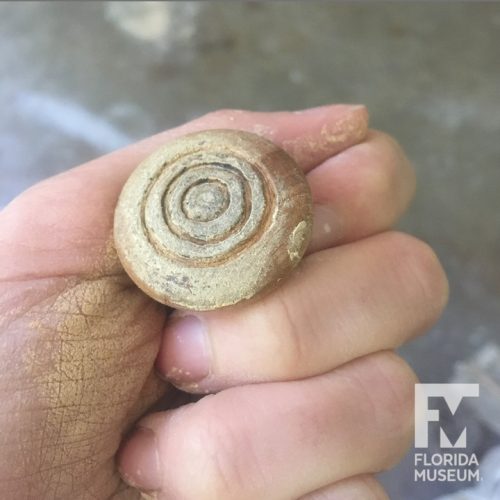
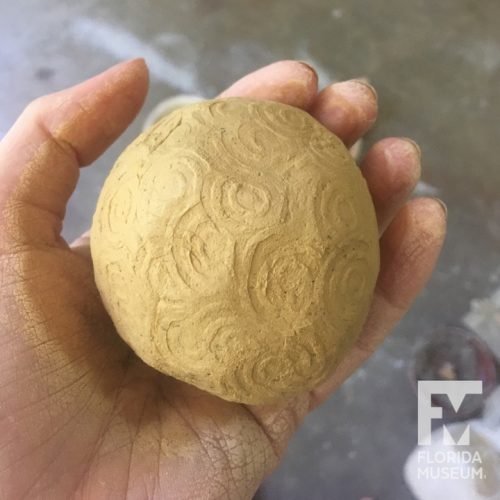
Now it will dry as I wait, first for some rain, and then for a dry day without too much breeze. It’s time for a fire.
You can explore our 3D collection of clay balls on Sketchfab. And stay tuned for Amanda’s research!